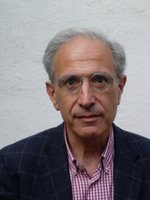Go on a grand tour
Over the summer of 2007 for 12 weeks ending on August 31st, the National Gallery in London turned central London into a giant art gallery by lining the streets of Soho, Piccadilly, and Covent Garden to create a “Grand Tour” of some of the world's most famous paintings. For example, the Arnolfini portrait by Van Eyck was in Berwick Street, and Van Gogh’s Sunflowers in Old Compton Street, both in Soho. All the paintings on this Grand Tour were reproductions produced by the event’s sponsors, Hewlett Packard. The real pictures could be seen every day free of charge in the National Gallery collection.
The Grand Tour website had an interactive map showing which paintings were hanging where, and an audio guide could be downloaded for information on the paintings. You could also call a phone number listed for each painting to find out the who, the why, the what and the when about that painting.
The National Gallery’s Grand Tour: www.thegrandtour.org.uk
What is a Grand Tour?
The Grand Tour was a European travel itinerary that flourished from about 1660 until the arrival of the railways from around the 1820s. It served as an educational rite of passage for the wealthy, rather as a gap year trip does today for pre-university students. A grand tour could last from several months to several years. It was always an adventure, travellign by horse and carriage along bad roads and across mountain renges with a retinue of servants, tutors and the like,
A Grand Tour typically began in Dover for crossing the Channel to France. In Paris the Grand Tourist might have French lessons and learn dancing, fencing and riding. From Paris he might go to Geneva then across the Alps into Italy. Once in Italy, he might spend a few months in Florence, Pisa, Bologna and Venice to study Renaissance art, and then on to Rome to study the classical ruins, with perhaps a visit to Naples for its music and to visit Pompeii and climb Mount Vesuvius. Towards the end of the 18th century, the more adventurous traveler might have visited Sicily and Greece. The journey home took the traveler through Austria, Germany, the Netherlands and Belgium, again with a wide range of cultural experiences on offer.
What you can do
1. Design your own Grand Tour enabling you to visit all the must-see things that will complete your education. These could be cultural, political, social or just fun places around the world. Even if you don’t do it, dream about it!
2. Organise a Grand Tour exhibition inspired by what the National Gallery did. Put art in public places for people to see. Perhaps start with just one painting, which you will need to get reproduced large-scale and you will also need to prepare and produce a few paragraphs of explanation alongside it. If the picture relates somehow to something of local interest, then all the better. You will need to find a sponsor prepared to put up the cost as well as the owner of a wall (in a prominent place) who is willing to let you hang your picture on it. Then try to get as much publicity as you can.
3. Do what Sing London did. Organise a sing-along in front of a picture in your local art gallery. For example in Sing London, they sang the song “Delilah” in front of a painting of Samson and Delilah and “Love and Marriage” in front of the Arnolfini portrait n the National Gallery. Your aim will be to encourage participatory singing and art appreciation, both at the same time. This could be an organised event, or just a “guerrilla happening” See www.singlondon.org


0 Comments:
Post a Comment
<< Home